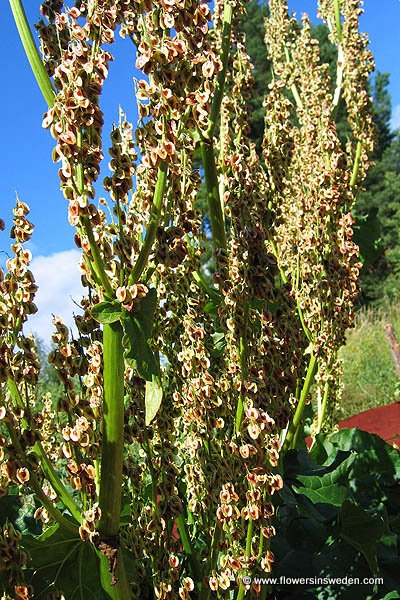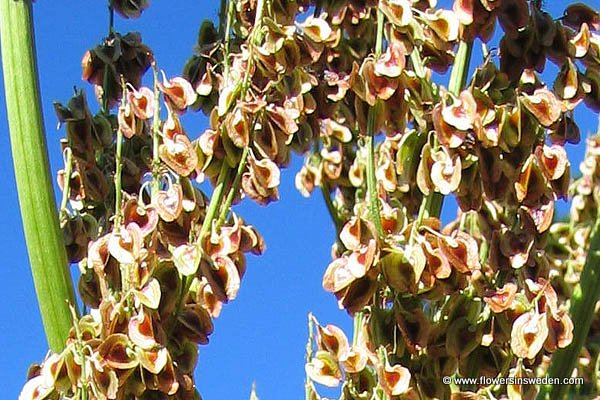
Derivation of the botanical name:
Rheum, Greek rhēon or rha for "roots and rhizomes" of rhabarbarum : rha, rhubarb (from Greek rhā , perhaps from Rhā, the Volga River.
rhabarbarum, literally the rhubarb of foreigners; Long ago, on the banks of the river Rha (the modern Volga), barbarian tribes were familiar with a plant with red-green succulent stalks that grew along the river. The plants from the Rha of the barbarians became the Latin "rhabarbarum", root of the modern English "rhubarb.
- The standard author abbreviation L. is used to indicate Carl Linnaeus (1707 – 1778), a Swedish botanist, physician, and zoologist, the father of modern taxonomy.
|


